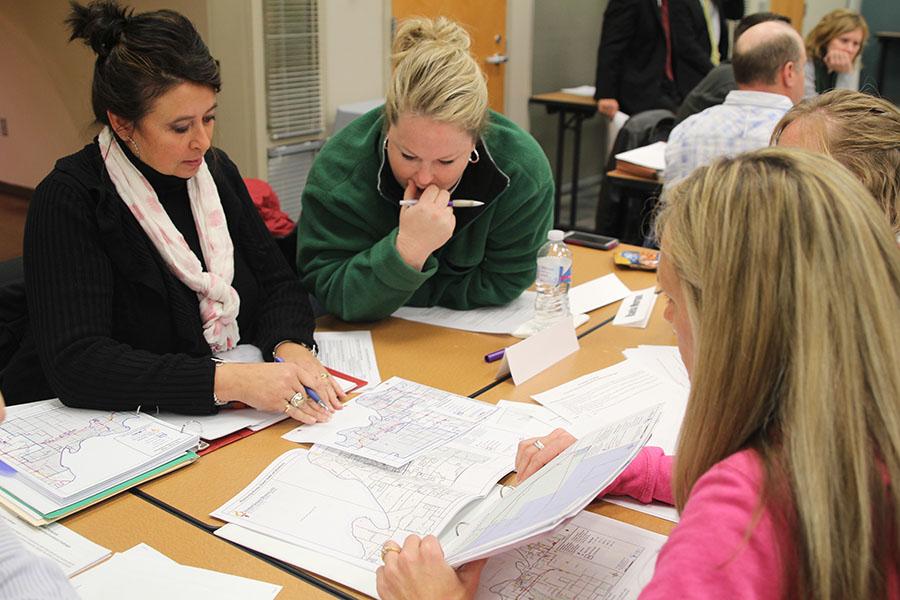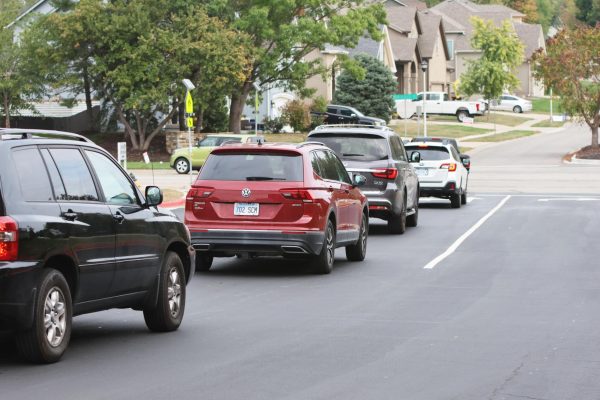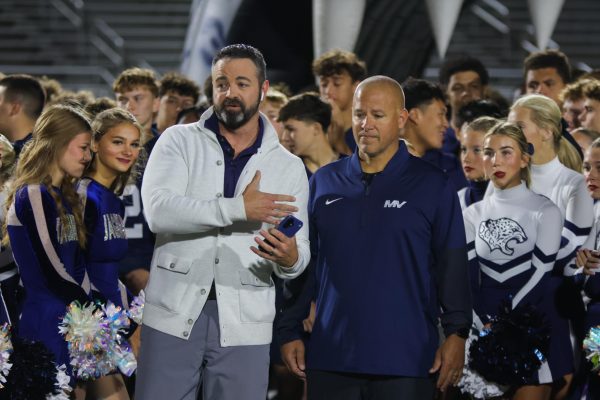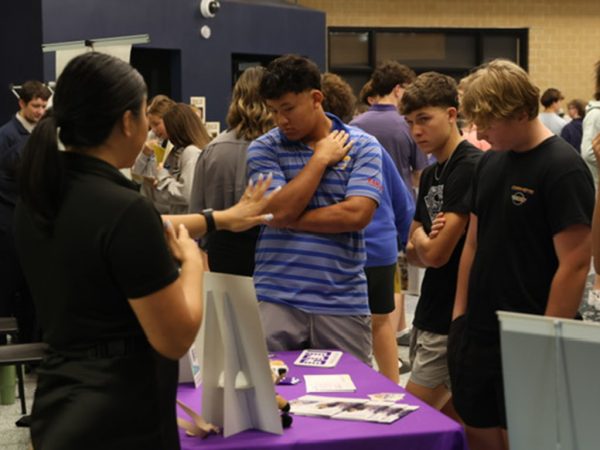Boundary Committee begins progress on discussing ideas at its fourth meeting
Lack of discussion before fourth meeting frustrates some committee members
District Boundary committee members go over the possible boundary changes for next year at the committee meeting on Thursday, Dec. 5.
After what some members described as a frustrating and slow process, the Enrollment and Boundary Study Committee began discussing specific ideas and solutions to enrollment challenges at its fourth meeting on Thursday, Dec. 5.
The majority of time was spent discussing ideas and forming proposals in small groups. It was also announced at the fourth meeting that the public forums were moved back from Dec. 18 and 19 to the week of Jan. 20 to provide more time to develop ideas and give the district more time to answer questions about them.
“I think we took too long to start discussing ideas,” committee member Brian Rodkey said at the end of the fourth meeting. “I think we should have done what we did tonight about a meeting or two ago.”
Director of administrative services and community relations Alvie Cater said having a large committee and a set process is what makes progress seem slow to some.
“Just because a committee member disagrees with the process, it doesn’t make it wrong,” Cater said. “We’re never going to have 100 percent agreement on anything. That’s why the committee members feel like there hasn’t been enough time to discuss ideas. It’s because it’s a process, and it’s because it’s a very large group … If we went in there trying to please everyone then we might as well pack it up now because it’s not going to happen. So I just urge anyone on that committee to have patience.”
Creating a sixth or ninth grade center, closing schools, building new schools, creating a new feeder system, bringing in mobile units to Mill Valley and Monticello Trails or providing a voluntary transfer program have all been discussed.
Cater also suggested looking at the data to determine whether the problem is more long-term or short-term.
“Just by looking at the data there may be some other ways to get around the enrollment challenges without going through some very complex changes,” Cater said. “[In] the enrollment forecast, you can see that there appears to be an enrollment bubble that’s moving through … enrollment is expected to peak during the next school year. The following year it’s expected to decrease again. So is there a way to sort of manage that bubble for one year? So the question is, is it really a major enrollment challenge or is it a minor challenge?”
Changes to the restrictions on solutions allowed the committee to consider a wider range of possible solutions were put into effect after the third committee meeting on Thursday, Nov. 14.
“When we first started out one of the requirements was that the grade level configuration [K-5, 6-8, 9-12] had to stay the same,” Rodkey said. “Then the community responded and said they didn’t want any options off of the table. They [originally also] didn’t want to affect more than 20 percent of the district. Opening that up allows us to affect more students but make the best possible decision.”
These changes were brought about by feedback from committee members who were frustrated by lack of progress in the first three meetings.
“I do think that we have made basically no progress,” junior committee member Callahan Eckardt said before the fourth meeting. “We’ve already looked at the data and they’re asking us a lot of what if questions. It’s a lot of speculation, we haven’t come up with possible solutions.”
However, other committee members preferred discussing problems before solutions.
“I think for how long it will be impacting people, it’s a good pace,” junior committee member Maddie Butterfield said. “It’s a really complicated situation, and we can’t rush any decisions. A pace like this allows us to observe all sides of it so that when we make our decision we can make sure that we didn’t leave any variable out.”
Eckardt said that deciding what solution is best is a difficult task but that the committee is an important step in the process of doing so.
“Really there are limitless solutions to this,” Eckardt said. “The possibilities are endless, and we are supposed to come up with which ones to use. I think the committee is a very good idea, and they should not cut it out because you can’t have just the Board of Education making the decisions. Parents and students from the schools that are going to be directly affected are going to bring so much more to the table.”
Rodkey said that while there is a variety of possible solutions, some changes are unavoidable.
“Some solutions we talk about will alleviate the elementary and middle school problems but don’t do anything for the high school problems,” Rodkey said. “Either a boundary change is inevitable or we will have to build onto the high schools.”
Cost is another factor that will be considered.
“The state of Kansas has reduced funding; we’ve cut at least $6 million from our operating budget over the last few years, which is a lot of money for us,” Cater said. “That is also going to be a factor because we’re at the point now as a school district where if you’re going to do something new then we’re going to have to give up something in order to get that accomplished because we just don’t have new money coming in every year.”
Though finding the best decision is hard, Cater remains optimistic.
“We’re going to be criticized no matter what we do, and I say that under this context: whatever decision is made, will everyone be happy? No,” Cater said. “It’s a challenge but we’re going to get through it. We really have great schools, we have great community support, and we can’t lose sight of that.”
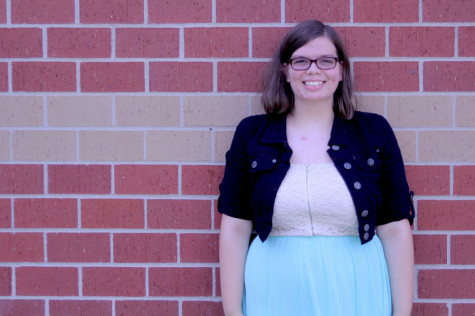
This is Katherine's third year on staff, and she is excited to work on the newspaper with a great staff this year. She is also involved in band, quiz bowl and literary magazine. When she is not in the journalism room or practicing an instrument, she is probably daydreaming about being in Disney World.


